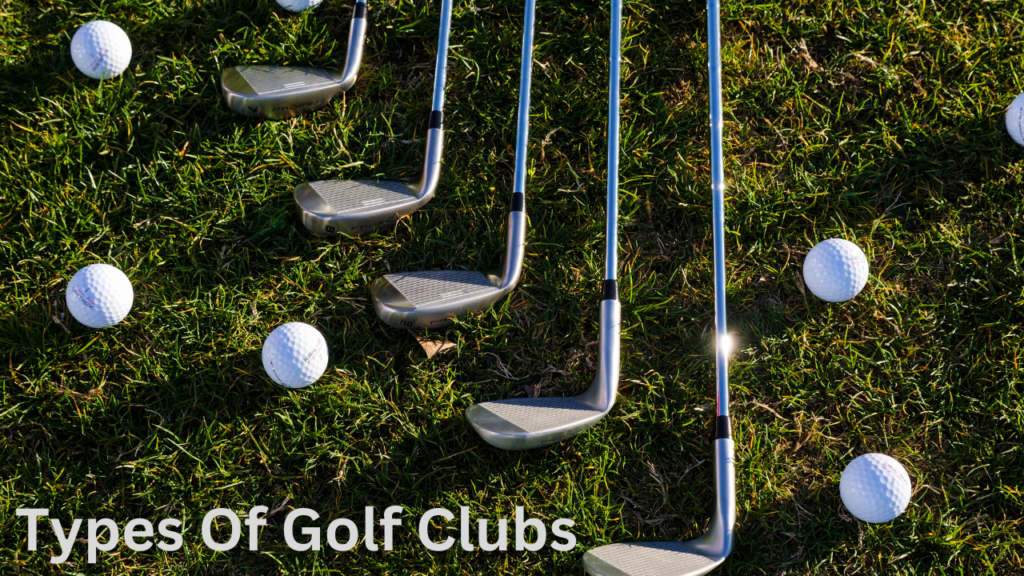Golf is a sport that requires skill, technique, proper equipment and most important of all, embedded in the course is the golf club. There are Types of golf clubs, each made for specific situations. Understanding what to expect with each of them can change the game in big ways. Knowing the right club to select and use is how one makes their performance improve, be it a novice or an experienced player. This guide will break up the different Golf Club Varieties and provide you with enough information to make the right decision.
What Are Types of Golf Clubs and How Do They Work?
A golf club is one such gadget that, for hitting the golf ball, varies in different forms. For standard use, a golf bag holds up to 14 individual clubs. Among these, there are clubs that send it a long distance, some to strike it precisely, and then those that can fine-tune your game on the shorter distances.
Golf Tool are chosen in terms of the shot to be played, distance, and even skill set. Let’s dive into the major Types of golf clubs and how they help you conquer the course.
1. Drivers: Maximizing Distance with Power
The driver is the longest tail in the bag and is designed for only one thing – distance.
Purpose: If you aim to hit the ball as hard as you can off the tee, the driver is your go-to.
Key Features:
- Largest clubhead among all the clubs, making it easier to make contact with the ball.
- Low loft, typically between 8° to 12°- Loft Launch as low as possible in the ball with maximum power and minimum spin.
- Long shaft, with higher swing speed and also to generate greater distance.
When to Use: Long par-4 and par-5 holes, use for maximal distance.
Pro Tip for Beginners: A more lofted driver with a greater sweet spot will make it a lot easier to launch the ball off the ground and subsequently improve control.
2. Fairway Woods: The versatility of longer shots
Fairway woods are actually used when you require distance coupled with good control from the fairway or the rough. They are created to hit the ball long distances while still providing a good degree of precision.
Use: Fairway woods are ideal for those shots that are long off the fairway or the rough and are also frequently used for approach shots to the green.
Key Characteristics:
- Fairway woods are shorter compared to drivers but can certainly provide adequate distance.
- Loft between 15° and 21° to permit tighter control of trajectory.
- Balloon-head design, enabling effective shooting from fairway or rough.
When to Use: Use fairway woods on second shots for par-5 holes, or to obtain closer to the green from farther distance.
Pro Tip: Use a 3-wood or 5-wood to strike a balance between distance and control.
3. Irons: Precision and Control at The Approach
These irons are versatile, balancing distance with accuracy. They are of particular importance for shots that fall between medium distance and approach shots to the green.
Use: Irons are known for hitting the ball in a variety of shots, such as approaches from the fairway or attempts to hit the ball out from the rough.
Types of Irons:
- Long Irons (2-4): Shots can get the farthest but require utmost skill to have some control.
- Mid Irons (5–7): A balance of distance and accuracy.
- Short Irons (8–9): Ideal for short, accurate shots, particularly as you get closer to the green.
When to Use: Use for shots requiring control and accuracy, especially for approach shots that need precision.
Pro Tip: Cavities are good for beginners since they offer a lot of forgiveness on off-center hits.
4. Hybrids: Wood-Iron Hybrid
Hybrids have come to be used widely because they are easy and versatile. Hybrids take the best of both woods and irons. These are excellent for long shots and tricky lies, too.
Purpose:Hybrids are designed to replace the challenging long irons (2–4).
Key Features:
- Similar in size to irons but with the forgiving design of a wood.
- More lofted and with a lower center of gravity to help launch the ball easier.
- More forgiving than long irons, especially off tough lies.
When to Use: Hybrids are excellent for long shots from the fairway, out of the rough, or tight tee shots.
Why Choose Hybrids: Hybrids provide the distance of a wood and the accuracy of an iron for full-disabled players.
5. Wedges: Precision for Short-Game Mastery
Wedges are useful for accuracy near the green and tricky short-range approaches, including bunker shots.
Kinds of Wedges:
- Pitching Wedge: That is often used between 80-120 yards to hit at medium distance.
- Sand Wedge: It enables players to come out of the bunker and out of the difficult sand traps.
- Gap Wedge: This wedge fills the distance gap between the pitching wedge and the sand wedge .
- Lob Wedge: For high soft shots while requiring the maximum loft.
When to use it: Wedges are used for short shot pursuits, bunker escapes, and soft chips around the green.
Pro Tip: Clean up your short game and practice with your wedges, as these sticks often determine how well you finish the hole.
6. Putters: The Finisher Team
The putter is arguably the most important stick in your golf bag, used right on the green to finish the hole. The accuracy and precision of your bag can often make the difference between a good score and a great one.
Purpose: Used for a short distance shot on the green, to roll the ball into the hole.
Key Features:
- It comes in several styles including blade putters, mallet putters and mid-mallets.
- Weighted head to improve control and stability.
- A flat face to ensure perfect ball contact.
When to use: The putter is used in the green with a single finish to complete the hole.
Pro Tip: Try to find a putter that feels good in your hand, as a perfect putting stroke has a lot to do with ‘confidence’ and ‘comfort’.
Golf Club Selection Based on Your Style of Game
You must now know the different Types of Golf Clubs, and it’s important to choose the proper clubs depending on your game and skill level. Here are a few main tips.
- Assess Your Skill Level: The beginner golfer, for example, will want hybrids and cavity-back irons, which provide forgiveness. The person who is better will want a club that offers more control, such as blade irons.
- Consider Custom Fit: Club fitting will ensure that the clubs are fitted to your body size, swing speed, and playing style. A club that fits you well might help you be much more consistent and productive.
- Practice Often: The more you familiarize yourself with each club, the better you’ll understand when and how to utilize them effectively.
.
Choosing the Right Club for Every Course Challenge
A suitable golf driver isn’t a matter of personal preference alone; it also depends on the course conditions. Terrain, weather, and the overall layout of each hole make a difference in terms of what club to take out of your bag or strategy. For example, if you play on a wet course, you will necessitate higher lofted clubs in order to release the ball in the air more easily, and on the dry course you might use clubs that would keep the ball lower and more controlled.
Another factor to consider is wind. Strong gusts may necessitate using clubs with lower lofts to mitigate the effects of the wind. For a course that has many hills, you may require a hybrid or iron to access your shots from different planes, while a flat course may allow you to rely more on the driver when hitting longer shots.
This understanding of how the game will respond to different environmental conditions allows you to more adequately predict which clubs will serve you best in various conditions. This allows you to approach the course with a more tactical mindset, helping you make better decisions and ultimately lowering your scores.
Conclusion: Master Your Game with the Right Clubs
You would likely get on your way to bettering your game once you understand golf tool, including what they do and how to make use of them. From the long driver to the precise putter, the entire club now performs a different function which could land you to be a very great golf player that navigates all of the course.. By choosing the right clubs for your handicap level and course conditions and practicing them regularly, you will be half way to reducing that score and becoming a more confident golfer.
The Key Takeaways:
- Mainly drivers are used for shots at a long distance, mostly from the tee.
- With fairway woods, one can develop variety and control for longer shots from the fairway.
- Irons are medium-range, accurate shots.
- Hybrids are the forgiving substitute for long irons and favored with difficult lies.
- Short game accuracy by wedges mainly when close to the green.
- Putters are more of a finishing tool for holes, precisioned with even a walk on the green.
Investment in good clubs as well as continuous development of one’s skills will result in more confident and effective navigation within the golf course.


